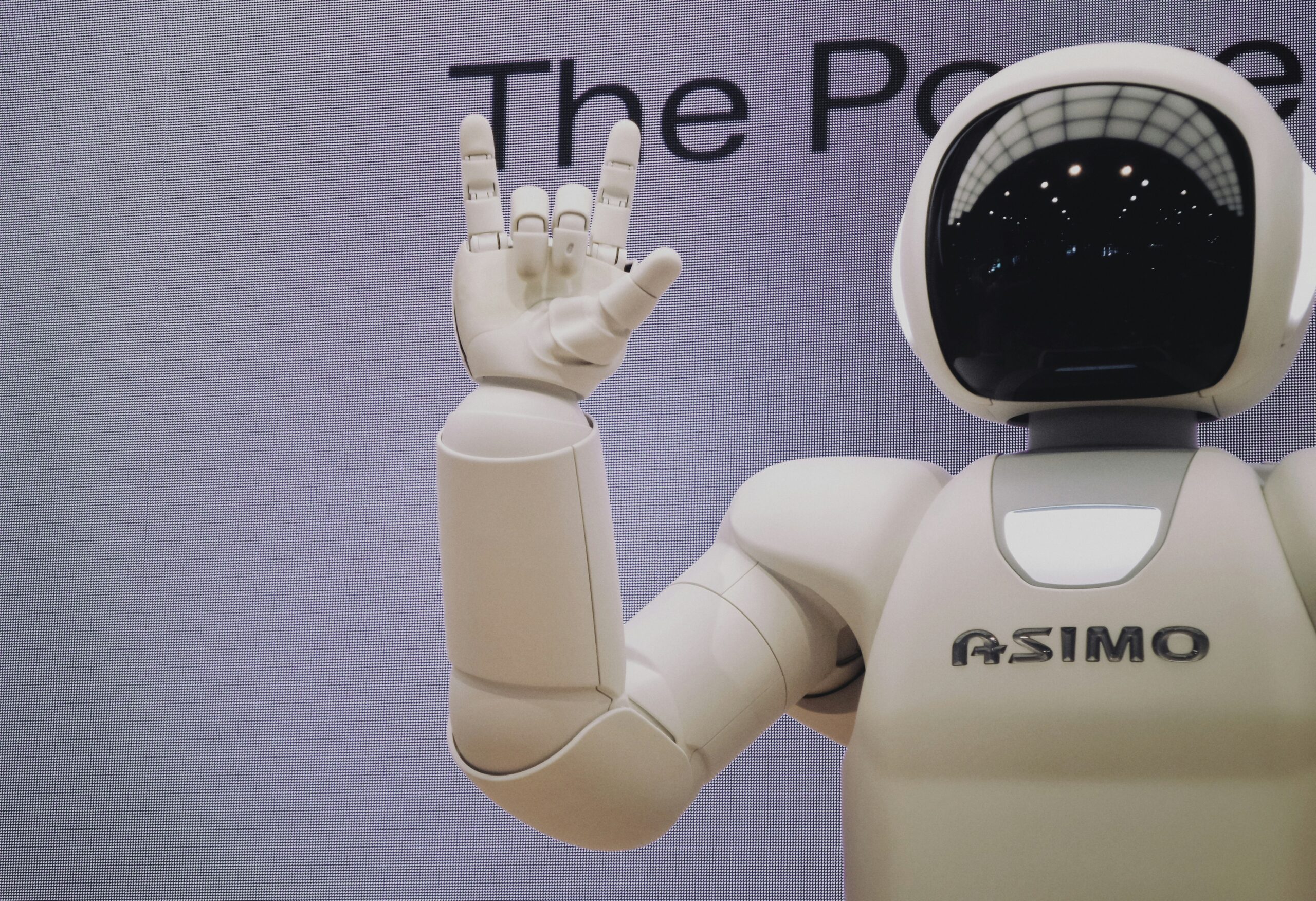Introduction to Fully Autonomous Factories
Fully autonomous factories represent a transformative evolution in the realm of manufacturing, marking a significant departure from traditional production methodologies. These innovative facilities are characterized by their capability to operate without direct human intervention. Unlike conventional manufacturing setups, which typically rely on human labor for various tasks, fully autonomous factories utilize advanced technologies such as Artificial Intelligence (AI), robotics, and the Internet of Things (IoT) to execute complex operations efficiently. This shift not only streamlines production processes but also enhances operational precision and reduces the risk of human error.
The core concept behind fully autonomous factories lies in the integration of smart machines that can learn, adapt, and optimize their performance autonomously. This technological advancement enables systems to monitor processes in real-time, analyze data, and make informed decisions, promoting continuous improvement. Moreover, the ongoing enhancements in machine learning algorithms and robotic capabilities have facilitated the transition toward zero-human manufacturing environments. As these technologies evolve, industries can expect to see reduced labor costs and increased productivity, reshaping the economic landscape of manufacturing.
Current trends underscore the rising momentum of fully autonomous factories, buoyed by the adoption of Industry 4.0 principles. Many companies are investing in automation to remain competitive and meet the ever-increasing demand for efficiency. Additionally, advancements in communication technologies are enabling factories to implement real-time data exchange, further enhancing collaborative interactions among automated systems. As industries embrace this paradigm shift, it becomes imperative to explore the implications of fully autonomous manufacturing systems—both their benefits and the challenges that accompany this seismic change in the manufacturing sector.
Technologies Driving Automation
Fully autonomous factories are revolutionizing the manufacturing landscape through the incorporation of advanced technologies such as robotics, artificial intelligence (AI), and the Internet of Things (IoT). Each of these components plays a pivotal role in facilitating a manufacturing environment where human involvement is minimized, thereby enhancing efficiency and productivity.
Robotics has seen unprecedented advancements in recent years, allowing machines to carry out complex tasks with precision and speed. These robots are equipped with sophisticated sensors and actuators that enable them to navigate their environment and adapt to changing conditions. In autonomous factories, they perform a range of operations from assembly to quality control, ensuring that processes run smoothly without constant human oversight. With advanced robotic systems, manufacturers can streamline production lines, reduce errors, and ultimately lower costs.
Artificial intelligence further elevates the capabilities of automated factories by providing the necessary intelligence for decision-making processes. AI systems can analyze vast amounts of data in real time, identifying patterns and making predictive assessments that inform production schedules and inventory management. In this context, machine learning algorithms can improve the performance of robots and enhance operational efficiency, leading to a more responsive manufacturing environment. With AI working alongside robotics, factories can achieve higher levels of automation and adaptability.
Moreover, the Internet of Things (IoT) connects various machines and devices within a factory to a centralized system. This interconnectivity allows for seamless data exchange, enabling real-time monitoring and control of manufacturing processes. IoT devices collect data that can be used to optimize workflows, predict maintenance needs, and enhance overall system performance. In fully autonomous factories, IoT acts as the backbone that supports both robotic and AI functionalities, creating an integrated manufacturing ecosystem.
In summary, the convergence of robotics, artificial intelligence, and the Internet of Things is the driving force behind the emergence of fully autonomous factories. By harnessing these technologies, manufacturers can achieve unprecedented levels of efficiency and productivity, setting the stage for a future characterized by reduced human intervention in production processes.
Benefits of Zero-Human Manufacturing
The advent of fully autonomous factories marks a significant shift in manufacturing paradigms, introducing numerous benefits that reshape the operational landscape. One of the primary advantages of zero-human manufacturing is the substantial increase in efficiency. Automation allows for continuous production without the interruptions typically associated with human labor, leading to faster turnaround times and optimized workflow. By utilizing advanced technologies such as robotics and artificial intelligence, factories can achieve higher output rates and meet growing consumer demands rapidly.
Another critical benefit is the reduction in production costs. By minimizing human intervention, companies can lower labor expenses and reduce costs associated with training and turnover. Additionally, automated systems tend to have less downtime due to human fatigue or health issues, further enhancing cost-effectiveness. This ability to maintain consistent production levels ensures that businesses can scale their operations without incurring significant additional costs.
Enhanced safety is yet another significant advantage of fully autonomous factories. Automation reduces the risk of workplace accidents primarily associated with manual labor. Robots can undertake hazardous tasks, such as heavy lifting or working in extreme conditions, ensuring a safer overall environment for personnel who may still be required for monitoring and maintenance roles.
Furthermore, the implementation of zero-human manufacturing results in consistent product quality. Automated systems do not suffer from variability that often stems from human factors, such as fatigue or distraction. They operate within precise tolerances, providing uniformity in production that meets rigorous quality standards.
Finally, the capacity for 24/7 operation without human fatigue is a hallmark of autonomous manufacturing. This continuous operation allows for meeting the demands of modern markets while maximizing resource utilization. The advantages of fully autonomous factories indeed signify a transformative advancement in manufacturing efficiency and effectiveness.
Challenges and Limitations
The emergence of fully autonomous factories marks a significant shift in manufacturing paradigms, promising efficiencies and innovations previously deemed unattainable. However, this radical transformation is not without its challenges and limitations. One primary concern is the potential for job displacement. As factories transition toward automation, many workers may find their skills rendered obsolete, leading to significant socio-economic implications. The workforce must adapt to these changes, but retraining and upskilling initiatives can be complex and resource-intensive.
High initial investment costs also pose a considerable barrier to the widespread implementation of autonomous factories. Organizations may need to commit substantial financial resources to acquire advanced robotics, artificial intelligence systems, and the necessary infrastructure. These upfront expenditures can be daunting, particularly for small to mid-sized enterprises that may struggle to compete with larger corporations that have more capital to invest.
Additionally, the reliance on sophisticated technology brings forth vulnerabilities associated with technical failures. Unexpected breakdowns in machinery or software glitches can lead to production halts, affecting output and profitability. Equally important are cybersecurity concerns. As manufacturing processes become increasingly interconnected, the risks associated with cyberattacks rise significantly, posing potential threats to sensitive data and operational continuity.
Furthermore, the integration of autonomous systems demands ongoing maintenance and updates. Just as any technology, autonomous machinery and software require regular checks and refinements to ensure optimal performance. This necessity can lead to increased operational complexities and additional costs over time.
In summary, while fully autonomous factories offer remarkable advancements, the inherent challenges and limitations—such as job displacement, high capital investment, technical vulnerabilities, cybersecurity risks, and maintenance demands—need careful consideration. Addressing these issues is crucial to pave the way for a more sustainable and equitable manufacturing landscape in the future.
Real-World Examples of Autonomous Factories
Fully autonomous factories are transforming traditional manufacturing processes across various industries by leveraging advanced technologies and streamlined operational models. One notable example is the Tesla Gigafactory, which emphasizes a heavily automated production line for electric vehicle batteries. Utilizing robotics and automation software, Tesla has managed to significantly enhance production efficiency while simultaneously reducing costs and improving product quality.
Another significant case is FANUC’s Autonomous Factory located in Japan. FANUC, a leader in robotics, employs an array of collaborative robots and advanced machine learning algorithms to optimize manufacturing workflows. Their production system showcases the integration of artificial intelligence for predictive maintenance and real-time inventory management, leading to reduced downtime and operational costs. The successful implementation of such technologies positions FANUC as a prime example of how autonomous systems can revolutionize the manufacturing landscape.
In the food industry, the autonomous brewery, created by the company IntelligentX, employs artificial intelligence to analyze consumer preferences and automate the brewing process. With AI-driven solutions for ingredient selection and brewing techniques, this factory not only produces beer but also adapts to emerging trends without human intervention. The result is a product line that quickly responds to market dynamics, demonstrating the potentially game-changing impact of automation in food production.
Moreover, Siemens has developed a fully automated factory for producing medical devices in Germany. This facility integrates robotics, 3D printing, and automated quality assurance testing, ensuring that products meet industry standards with minimal human oversight. The outcomes reflect a reduced lead time and enhanced product precision, showcasing how the healthcare sector can significantly benefit from autonomous manufacturing technologies.
These real-world examples illustrate the diverse applications of fully autonomous factories. Across various sectors, businesses are adopting automation to not only enhance operational efficiency but also to innovate product offerings, thereby redefining the manufacturing paradigm.
The Role of Humans in a Fully Automated Environment
As industries increasingly gravitate towards fully autonomous factories, a significant misconception is that human roles will diminish entirely. While automation is transforming production processes, human involvement remains crucial to ensuring the seamless operation of these advanced systems. Jobs related to supervision, maintenance, programming, and quality control are just a few of the areas where humans continue to play an indispensable role in fully automated environments.
Supervision is critical in any automated production line. While robots and computer systems handle repetitive tasks with high efficiency, humans are required to oversee operations, making strategic decisions and addressing any unexpected issues that may arise. This supervisory role ensures that production continues smoothly and that any disruption is quickly rectified, underscoring the necessity of human oversight in managing complex machinery and software interactions.
Additionally, the maintenance of equipment is vital in a fully autonomous setting. Despite the robustness of automated systems, human technicians are necessary for preventive maintenance and repairs. These professionals possess the skills to diagnose and rectify faults that automated systems cannot identify. They also update and calibrate machinery, ensuring that all components function optimally, thereby prolonging the equipment’s lifespan and enhancing productivity.
Programming is yet another essential function performed by humans in automated factories. Specialists are needed to write, test, and update software that drives robotic systems. This includes not only initial programming but also ongoing adjustments in response to changing production demands and technological advancements. Their expertise ensures that automation remains adaptable and efficient.
Finally, quality control remains a fundamental human task, especially in industries where precision is paramount. Automated systems can conduct initial quality assessments; however, a human eye is indispensable for final inspections to confirm that products meet required specifications and standards, thus avoiding costly errors.
Future Trends in Automation and Manufacturing
The landscape of manufacturing is undergoing a profound transformation characterized by rapid advancements in automation technologies. One of the most significant trends is the integration of machine learning into manufacturing processes. This allows systems to continuously improve through experiences and data analysis, enhancing efficiency and reducing errors. As machines become more intelligent, they will possess the ability to predict equipment failures, optimize production schedules, and personalize manufacturing to meet customer demands. The evolution of autonomous factories powered by advanced algorithms is set to revolutionize traditional production lines.
Another noteworthy trend is the adoption of collaborative robots, commonly referred to as cobots. Unlike traditional robots designed to operate independently, cobots are built to work alongside human workers, enhancing productivity without replacing the human element. This symbiotic relationship leads to improved workplace safety, as cobots can take over dangerous or repetitive tasks, thereby allowing human operators to focus on more complex and creative responsibilities. As industries strive for greater efficiency, the integration of cobots is likely to become a standard practice in manufacturing settings.
Sustainable manufacturing practices are also gaining traction as companies increasingly prioritize environmental responsibility. Future trends are expected to promote the use of renewable energy sources and the implementation of circular economy principles, which aim to minimize waste and maximize resource efficiency. Innovations such as 3D printing can contribute to sustainability by allowing for on-demand production, reducing overstock, and enabling the use of recycled materials. By embracing these greener practices, manufacturers can enhance their competitive edge while fulfilling their corporate social responsibilities.
In light of these advancements, it becomes evident that the future of manufacturing will likely be defined by high levels of automation, enhanced collaboration between humans and machines, and a strong commitment to sustainability. As we move forward, the industry’s landscape may transform significantly, aligning more closely with technological capabilities and societal expectations.
Regulatory and Ethical Considerations
As fully autonomous factories emerge, regulatory and ethical considerations become pivotal in addressing the complexities introduced by this advanced manufacturing paradigm. One of the foremost concerns involves labor laws, particularly in relation to the displacement of human workers. The transition to zero-human manufacturing raises questions about job security and the future of employment in various sectors. Governments and regulatory bodies must develop frameworks that not only protect workers but also promote fair transitions to alternative employment opportunities, should traditional roles become redundant.
Additionally, the safety regulations surrounding autonomous systems must be rigorously evaluated. As factories automate processes that were previously conducted by humans, there must be stringent guidelines in place to ensure that these systems operate safely and efficiently. Industries such as automotive manufacturing, where robotics play a significant role, highlight the critical need for safety measures to prevent accidents that could arise from equipment failures or programming errors. As the technology evolves, regulations must keep pace to ensure both worker safety and the reliability of automated processes.
Furthermore, ethical implications surrounding reliance on autonomy within manufacturing cannot be overlooked. Companies may face scrutiny regarding their responsibilities toward displaced workers. Ethical sourcing and fair treatment of employees are essential components of a socially responsible business model. This requires companies to take proactive measures, such as providing retraining programs and supporting worker transitions into new job markets. Engaging stakeholders in discussions on the implications of automation fosters transparency and accountability, ultimately contributing to more balanced and ethical business practices. As autonomous factories take center stage, the dialogue surrounding regulatory and ethical considerations must remain a priority to navigate the challenges and opportunities they present.
Conclusion: Embracing the Dawn of Automation
As we stand on the brink of a revolutionary transformation in the manufacturing industry, the advent of fully autonomous factories signifies a remarkable shift towards zero-human manufacturing. This innovative approach to production is poised to redefine efficiency, scalability, and overall productivity. By integrating advanced technologies such as artificial intelligence, robotics, and the Internet of Things (IoT), these factories can operate with minimal human intervention, optimizing processes in ways that were previously unimaginable.
The benefits of embracing autonomous manufacturing are extensive. For instance, these factories can operate round the clock, effectively eliminating downtime associated with human labor. As machines and algorithms take over repetitive tasks, it is anticipated that the quality and consistency of products will improve significantly. Furthermore, the reduction in human error presents a compelling case for industries striving for high precision in their outputs. It also allows companies to reallocate their human resources to more complex problem-solving roles, thereby fostering innovation and creativity within the workforce.
However, this transition raises important questions about the future of labor in the manufacturing sector. While automation may lead to enhanced productivity and reduced operational costs, it also poses challenges regarding job displacement. It is crucial for stakeholders to contemplate the implications of this shift and devise strategies for workforce transition, including retraining and reskilling programs. The acceptance of fully autonomous factories should be accompanied by discussions about the future role of humans in these spaces and how they can coexist with advanced technology.
In conclusion, as we embrace this new era of manufacturing, it is essential to recognize both the opportunities presented by fully autonomous factories and the challenges that accompany them. By fostering an open dialogue regarding the future of labor and production, industry leaders and policymakers can navigate this transition thoughtfully and effectively.




